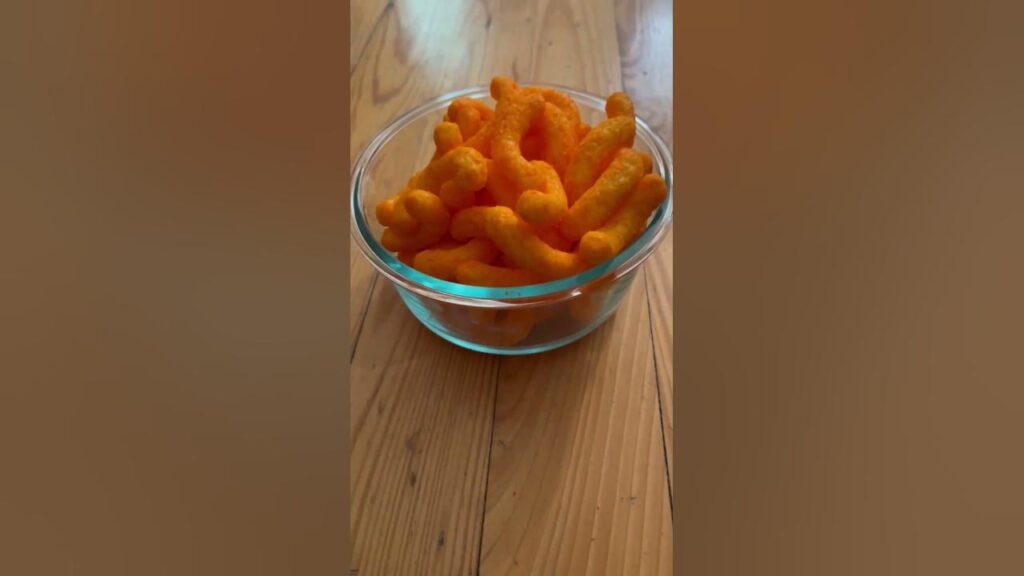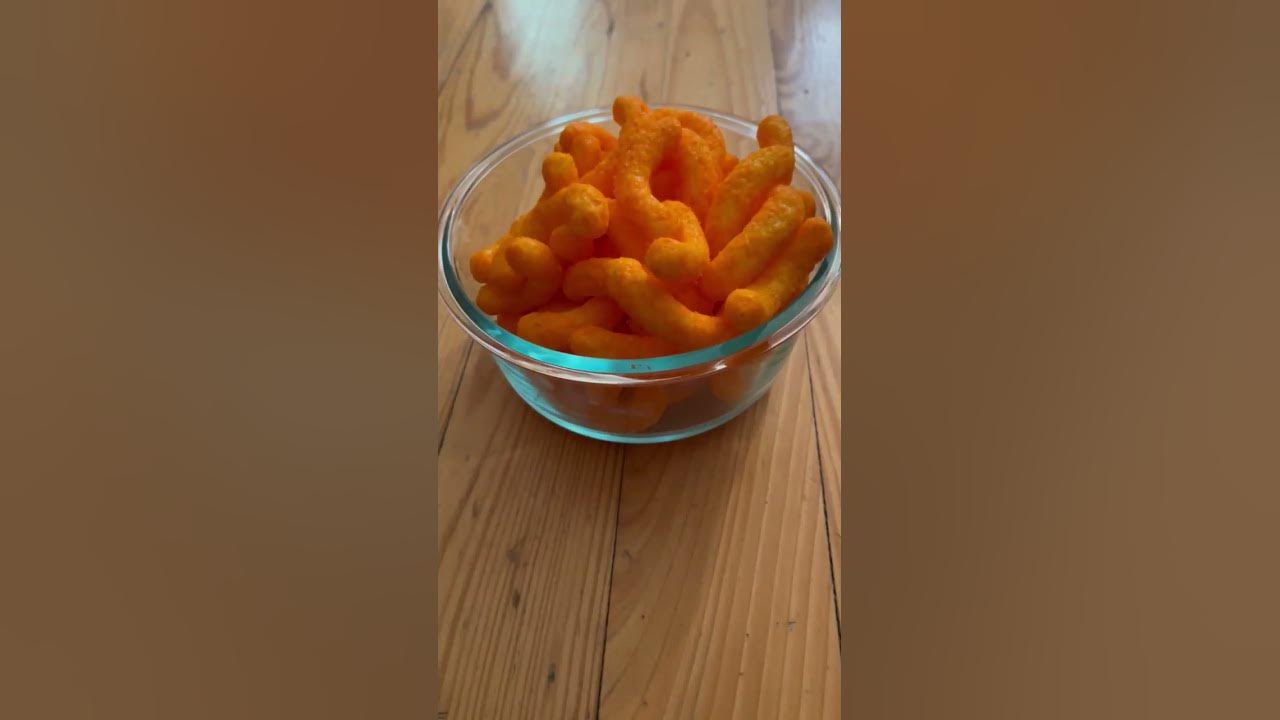
When Can I Give My Baby Cheeto Puffs? A Comprehensive Guide for Parents
Navigating the world of infant nutrition can feel like traversing a minefield. Every parent wants to ensure their little one receives the best possible start in life, which includes introducing solid foods at the right time and in a safe manner. A common question that arises is: When can I give my baby Cheeto Puffs? While seemingly straightforward, the answer requires careful consideration of your baby’s developmental readiness, the nutritional value (or lack thereof) of Cheeto Puffs, and potential health risks.
This article aims to provide a comprehensive guide to help you make an informed decision about introducing Cheeto Puffs to your baby. We will delve into the recommended age for introducing solids, the nutritional content of Cheeto Puffs, potential choking hazards, and healthier alternatives you can consider.
Understanding Infant Development and Readiness for Solids
Before even considering giving your baby Cheeto Puffs, it’s crucial to understand the general guidelines for introducing solid foods. Pediatricians typically recommend starting solids around 6 months of age. However, age is not the only factor. Your baby should also exhibit certain developmental milestones indicating readiness. These include:
- Sitting upright with good head control: This is essential for safe swallowing.
- Showing interest in food: Reaching for your plate, opening their mouth when they see food, and watching you eat are all signs of interest.
- Loss of the tongue-thrust reflex: This reflex, which pushes food out of the mouth, typically diminishes around 6 months.
- The ability to move food from the front to the back of the mouth and swallow: This is a crucial skill for safely consuming solid foods.
If your baby is not yet demonstrating these milestones, it’s best to wait before introducing any solid foods, including Cheeto Puffs. Premature introduction can lead to digestive issues and increase the risk of allergies.
Nutritional Value (or Lack Thereof) of Cheeto Puffs
Let’s be honest: Cheeto Puffs are not exactly a nutritional powerhouse. They are primarily composed of cornmeal, vegetable oil, cheese seasoning, and salt. While they do provide some carbohydrates and a small amount of fat, they lack essential vitamins, minerals, and fiber that are crucial for a baby’s growth and development.
Here’s a closer look at the nutritional content of Cheeto Puffs:
- High in Sodium: Excessive sodium intake can be harmful to a baby’s developing kidneys.
- High in Unhealthy Fats: The vegetable oils used in Cheeto Puffs are often processed and can contribute to unhealthy fat intake.
- Low in Fiber: Fiber is essential for healthy digestion and preventing constipation. Cheeto Puffs offer very little fiber.
- Artificial Flavors and Colors: Many parents prefer to avoid artificial additives in their baby’s diet.
Considering the limited nutritional value, it’s clear that Cheeto Puffs should not be a staple in your baby’s diet. They offer empty calories and can displace more nutritious foods.
The Choking Hazard Factor
Another critical consideration when asking, “When can I give my baby Cheeto Puffs?” is the potential choking hazard. Cheeto Puffs are small and can easily dissolve in the mouth, but they can also become sticky and clump together, posing a risk of choking, especially for babies who are just learning to manage solid foods.
To minimize the risk, always supervise your baby closely while they are eating. Ensure they are sitting upright and not distracted. Cut Cheeto Puffs into smaller pieces if you choose to offer them. However, even with these precautions, the risk of choking remains a concern.
Healthier Alternatives to Cheeto Puffs
Instead of relying on Cheeto Puffs, focus on introducing nutrient-rich foods that support your baby’s growth and development. Here are some healthier alternatives:
- Soft-Cooked Vegetables: Steamed carrots, sweet potatoes, and peas are excellent sources of vitamins and minerals. Ensure they are cooked until soft and cut into small, manageable pieces.
- Soft Fruits: Mashed bananas, avocados, and cooked apples are easy for babies to digest and provide essential nutrients.
- Iron-Fortified Infant Cereal: This is a good source of iron, which is crucial for brain development.
- Whole Grain Puffs: Look for puffs made from whole grains and without added sugar, salt, or artificial ingredients. These can be a better alternative to Cheeto Puffs.
- Yogurt Melts: These dissolve easily in the mouth and provide calcium and probiotics. Choose brands with minimal added sugar.
Remember to introduce new foods one at a time to monitor for any allergic reactions. Consult with your pediatrician or a registered dietitian for personalized recommendations based on your baby’s individual needs.
Potential Allergic Reactions
While less common, allergic reactions to ingredients in Cheeto Puffs are possible. The most common allergens include milk (dairy) and corn. If your baby has a known allergy to either of these ingredients, you should avoid Cheeto Puffs altogether.
Signs of an allergic reaction can include:
- Hives
- Rash
- Swelling of the face, lips, or tongue
- Vomiting
- Diarrhea
- Difficulty breathing
If you suspect your baby is having an allergic reaction, seek immediate medical attention.
The Role of Parental Discretion
Ultimately, the decision of when you can give your baby Cheeto Puffs rests with you, the parent. However, it’s essential to weigh the potential risks and benefits carefully. While an occasional Cheeto Puff might not cause significant harm, it’s crucial to prioritize nutrient-rich foods that support your baby’s overall health and development.
Consider the following factors before offering Cheeto Puffs:
- Your baby’s age and developmental readiness: Are they at least 6 months old and exhibiting the necessary developmental milestones?
- The nutritional content of Cheeto Puffs: Are you aware of the limited nutritional value and potential health risks?
- The choking hazard: Are you prepared to supervise your baby closely and take necessary precautions?
- Healthier alternatives: Are you prioritizing nutrient-rich foods over processed snacks?
Expert Opinions and Recommendations
According to the American Academy of Pediatrics (AAP), the focus should be on introducing a variety of nutrient-rich foods to infants starting around 6 months. They emphasize the importance of fruits, vegetables, grains, and proteins. While the AAP doesn’t specifically address Cheeto Puffs, their guidelines clearly prioritize whole, unprocessed foods.
Many pediatricians and registered dietitians advise against offering Cheeto Puffs to babies due to their low nutritional value and potential health risks. They recommend focusing on healthier alternatives that provide essential nutrients for growth and development. It is always recommended to consult with your pediatrician before introducing any new foods to your baby, including Cheeto Puffs.
A Balanced Approach to Introducing Solids
Introducing solids should be a gradual and enjoyable process. Start with small amounts of single-ingredient foods and gradually introduce new flavors and textures. Pay attention to your baby’s cues and adjust your approach accordingly. Remember that breast milk or formula should remain the primary source of nutrition for the first year of life.
Avoid adding salt, sugar, or honey to your baby’s food. These additives can be harmful and can contribute to unhealthy eating habits later in life. Focus on offering a variety of wholesome foods that are naturally flavorful.
Conclusion: Making an Informed Decision About Cheeto Puffs
So, when can you give your baby Cheeto Puffs? The answer is not a simple yes or no. While an occasional Cheeto Puff might not be detrimental, it’s crucial to prioritize nutrient-rich foods that support your baby’s growth and development. Consider the potential risks and benefits, and make an informed decision based on your baby’s individual needs and your parenting philosophy.
Focus on introducing a variety of fruits, vegetables, grains, and proteins. Consult with your pediatrician or a registered dietitian for personalized recommendations. And remember, a healthy and balanced diet is the foundation for a lifetime of good health.
Ultimately, while the allure of a quick and easy snack like Cheeto Puffs might be tempting, remember that your baby’s health and well-being are paramount. Prioritize nutrient-rich foods, supervise meal times closely, and consult with healthcare professionals to ensure your little one gets the best possible start in life. Think about the long-term benefits of establishing healthy eating habits early on. By making informed decisions about your baby’s diet, you’re setting the stage for a lifetime of good health. Even though the bright orange hue of Cheeto Puffs may be appealing, remember that natural, vibrant colors found in fruits and vegetables offer far greater nutritional value. Always consider the ingredients and nutritional information before offering any processed snack to your baby. The question of when can I give my baby Cheeto Puffs is best answered by considering all the factors discussed above and making a decision that aligns with your values as a parent and your commitment to your child’s health. So, the next time you’re tempted to reach for a bag of Cheeto Puffs, pause and consider the healthier alternatives available. Your baby will thank you for it in the long run. And remember, the journey of introducing solids is a marathon, not a sprint. Be patient, be persistent, and focus on creating a positive and enjoyable experience for your little one. The Cheeto Puffs can wait!
[See also: Baby Led Weaning Guide]
[See also: First Foods for Baby]
[See also: Preventing Choking in Infants]

